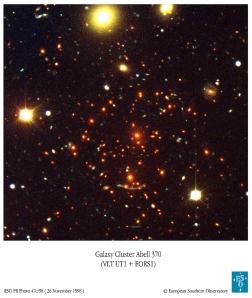Lectures / 23/03/2009 7:30 pm
Open Space?
What are the structures of the universe? From the Big Bang to today
Only moments after the Big Bang matter was already distributed inhomogeneously owing to minute fluctuations in density. The so-called background radiation testifies to this even today. In the course of the expansion of the universe gravitation enhanced this inhomogeneous distribution to form conglomerations of matter, which we are trying to find out more about by looking back into the early stages of the universe, where we encounter them in an “aged” version. It is the formation of these structures that have kept the universe “on the move” throughout.
In terms of mass, the structures of the universe range from dwarf galaxies with several million times the mass of the sun to mass rich galaxies, such as our Milky Way with 100 billion times the mass of the sun, and to groups of galaxies, such as the Local Group, which includes our Milky Way, Andromeda, M33, a host of dwarf galaxies and heaps of galaxies of a magnitude of up to 10,000 times that of our Milky Way. In addition to the matter that emits light across the whole spectrum of electromagnetic radiation, dark matter, whose existence is inferred on the basis of how structures form in the universe and without which the observable kinematics of the universe cannot be accounted for, is a tremendous challenge to our powers of comprehension. The latest discoveries of the increase in the speed at which the universe expands is another challenge to our basic understanding of physics.





